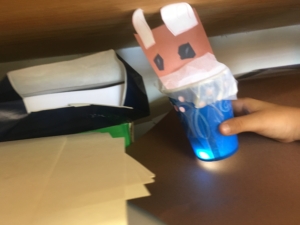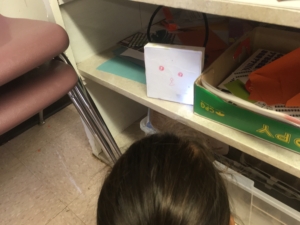Making in 3rd Grade – Chinese Rabbit Lanterns
Ms. D came to the Makery at John Gill Elementary STEAM School with a project idea. “Can you help my students build Chinese Rabbit Lanterns?” she asked. Her 1st grade Mandarin Immersion class was studying customs and traditions in their social studies unit. They had read stories about the Chinese Harvest Festival that celebrates autumn and the full moon. Rabbit lanterns, large and small, are a big part of the tradition, illuminating the night as the seasons change.
Ms. D shared a picture of a paper rabbit built around a wire frame. A candle or a small light shown from the inside. She said, “I only have one class period for this project. Do you think we can do it?”
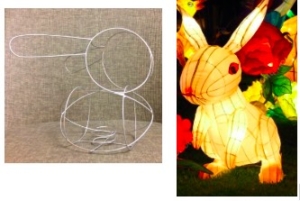
Constraints
Constraints are a big part of engineering. The two biggest constraints our teachers face when designing engineering activities are time and materials. Standardized testing puts firm deadlines on where our students need to be at the end of each school year. Because of these demands, our teachers often have little time to devote to projects outside of content areas, such as mathematics and reading. The costs and access to materials also present challenges. Given these constraints, we have to be creative with how we use time and materials in the maker space.
I met with our maker teacher, Ms. N, to discuss the lesson. We knew the outcomes we wanted. Students needed to walk out of a 50-minute class with an illuminated rabbit lantern. So, we started backwards planning. We threw out all ideas that used wire. Those designs would take too much time, and there was no way a 6-year old could bend wire without lots of assistance.
We did an internet search on Chinese Rabbit Lanterns and found several alternative designs. We settled on 3 that used easy-to-find materials and no wire. One was a paper bag, with a paper rabbit pasted to the front. Another was a paper cup, with a rabbit face peering over the top. The third one was a small box, dressed up like a rabbit.
Next, we needed a light inside. We had already designed projects in the past for 1st graders using LED lights and 3-volt coincell batteries. It would be easy to tape an LED around the battery and drop it into the lanterns. We felt like we had the project figured out.
To Prototype or Not – Is That the Question?
However, one question remained: Do we make prototypes of the three types of lanterns, or do we provide materials and let students come up with their own designs? I could hear the maker community in my head – no prototypes! We’d made mistakes before, building prototypes for classes, sometimes at the request of teachers. The results were always the same. Students built what they thought teachers wanted them to build. You end up getting 30 projects that all look the same!
We debated. Since we had limited time, and we had 3 prototypes to choose from, we decided to build one example of each. We wanted to go through the building process ourselves, to get a sense of where students might get stuck with cutting and gluing. We knew that we would emphasize that the prototypes were just ideas, and after students arrived and saw the models, we would take them away. It wasn’t an ideal compromise, but we felt like it would work for this project.
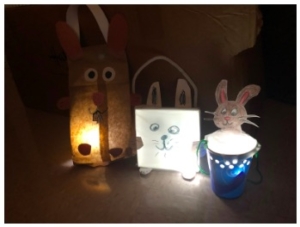
The day of the project, the students entered the maker space. It was their first project of the year. We reminded them about the Harvest Festival and the tradition of paper lanterns. “Today,” Ms. N said, “you will each make a rabbit lantern of your own.” We showed them the 3 example projects, and the table of materials. Then, they got to work.
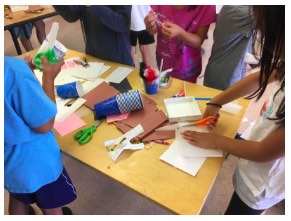
Students worked on one of the three project ideas, each with their own variations. There were lots of struggles with cutting shapes and taping down plastic or wax paper to boxes and cups. Ms. N and I needed to put the LED lights together for students, too. It was hard for students to tape the batteries around the legs of the lights and keep them lit. But, by the end of the period, everyone had a working lantern.
What is Success?
Success for making activities should not necessarily be measured by what students create so much as the process of how they make. During the Chinese Rabbit Lantern Project, I listened for the types of questions students asked. I heard these: “How do I attach a thing to the top of the box for a handle?” “What do I do for the cover, so light can shine through?” “There’s only one tape roll. How do I get tape?” Each question pointed to a different skill we want our students to develop as they solve problems. It might be a unique engineering solution, it might be about understanding the way light works with different materials, or it might be about learning to share and help others. The lantern is just the object that reminds us about how our students were able to answer these questions.
